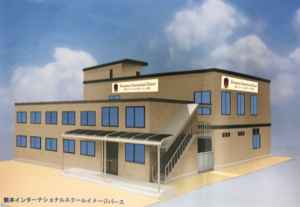オンライン授業を振り返って
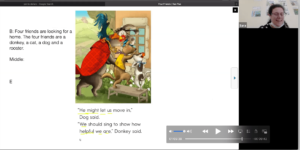 The Coronavirus pandemic this year has placed unprecedented challenges on schools in Japan and around the world. Following the direction of the Kumamoto Board of Education, KIS moved to teaching all grades online in April and May. Although we were able to offer Hearth Club (Gakudo Hoiku) for certain students, the majority of our pupils took classes at home via Zoom each day. KIS offered our English and Japanese curriculum online in a differentiated format similar to that used during regular classes.
The Coronavirus pandemic this year has placed unprecedented challenges on schools in Japan and around the world. Following the direction of the Kumamoto Board of Education, KIS moved to teaching all grades online in April and May. Although we were able to offer Hearth Club (Gakudo Hoiku) for certain students, the majority of our pupils took classes at home via Zoom each day. KIS offered our English and Japanese curriculum online in a differentiated format similar to that used during regular classes.
The beginning of the school year is a critical time for all students, but it is especially so for new Grade 1 students. KIS wanted to try to provide students with as regular a life and education as possible during this difficult period, and thus offered daily online classes for all grades. Online learning is difficult for younger students because they struggle with focus and are still working on mastering basic reading and writing skills which can only be practiced properly with real pencils and paper. Working within this limitation, we used a balanced approach of most instruction taking place online, but homework assigned digitally and, in the case of Kokugo, via printed materials that were mailed to all students. All students were given daily homework assignments which they completed and then uploaded digitally for review by teachers.
One of the challenges of teaching online is providing effective feedback to students — mistakes that are not corrected can quickly become bad habits that are hard to break. Further, it is simply quite challenging to provide effective, targeted feedback for students when they are not in the same physical space as the teacher. KIS teachers worked hard to overcome the limitations of virtual instruction using screen share within Zoom and small group differentiated instruction. By displaying curriculum materials via screen share and writing directly onto them, we were able to provide engaging and effective feedback in most cases. In addition, staff followed up with further comments on the homework uploaded by the students each day.
We returned to full regular classes on Monday, June 1st, and it is wonderful to have all students back in the classroom (we can finally take full advantage of the new building!). It is interesting to realize, however, that staff learned many things about being more effective instructors during this time.
In retrospect, although online teaching was challenging and placed a large burden on parents at first (particularly in Grade 1), everyone got used to the virtual teaching format quickly and worked hard to maximize the possibilities for online education. It did take a few weeks of constant tweaking, but in the end, I was extremely proud of how hard students, parents, and staff worked during this time and the resulting quality of our classes. Everyone rose to the challenge posed by online teaching, and while I hope that we do not have to return to teaching virtually, I know that we will be ready if it becomes necessary to do so again in the future.
 新型コロナウイルスの影響は今もなお、日本中、そして世界中の学校を前例のない苦況に立たせています。熊本県教育委員会の方針に沿って、KISでは4月と5月の間は全学年オンライン授業を行いました。一部の児童はハースクラブ(学童保育)の利用が可能でしたが、多くの児童はZoomを使用して毎日自宅からの授業でした。またKISでは、英語と国語のカリキュラムおいては、オンライン授業になっても、可能な限り通常授業と同じように児童のレベルに応じたグループ別の指導を行いました。
新型コロナウイルスの影響は今もなお、日本中、そして世界中の学校を前例のない苦況に立たせています。熊本県教育委員会の方針に沿って、KISでは4月と5月の間は全学年オンライン授業を行いました。一部の児童はハースクラブ(学童保育)の利用が可能でしたが、多くの児童はZoomを使用して毎日自宅からの授業でした。またKISでは、英語と国語のカリキュラムおいては、オンライン授業になっても、可能な限り通常授業と同じように児童のレベルに応じたグループ別の指導を行いました。
新年度の始めはどの児童にとっても非常に大事ですが、新一年生にとっては特にそうです。このような大変な状況下でも、児童にはできる限り通常通りに授業を受け日常生活を送って欲しいと願い、毎日全学年でオンライン授業を行いました。実際に紙と鉛筆を使用しての練習を必要とするリーディングとライティングの基礎を始めたばかりの児童や、集中力が未熟な幼い児童達にとって、オンライン授業はとても難しいことです。このような制限の中、ほとんどの指導をオンラインで行い、宿題はデジタルを使用し、また国語においては郵送されたプリントを使う、というふうにバランスを取りながらの指導を行いました。全児童が、毎日担任からデジタルで宿題を受け取り、答えをアップロードし、それを一人ひとり担任が確認するというやり取りを行いました。
オンラインでの指導で難しい事の一つが、教師がいかに効果的に児童にコメントを与えることができるかどうかです。学習の基礎はとても重要です。間違いはすぐに正さないと癖になり、あとで修正することが難しくなります。また、教師が同じ空間にいないという環境で、児童に対して適切で的を射たコメントを与えることは大変難しいことです。KISでは教師全員が一生懸命に考え、これらオンライン指導の難点をZoomの画面共有機能を使ったり、児童を小さいグループに分けて指導するなどの工夫をこらして乗り切ることができました。また、画面でカリキュラムの教材を共有しながらそこに直接文字を書き込むことで、児童の興味を引き効率的な指導も行うことができました。更に、児童がアップロードした宿題の答えに対して、教師が一人ひとりにコメントを返し、毎日のフォローアップを徹底するよう努めました。
さて、ついに6月1日(月)より完全に通常授業に戻りました。児童全員が元気に学校に戻ってくることができたことを心より嬉しく思います。やっと新校舎の活躍の場が来ました!
この数ヶ月の経験は、私たち教職員にとって、より効果的な指導者になるための貴重な学びにもなりました。
最後になりましたが、オンライン授業は保護者の皆様にとって大きなご負担になっていたかと思います。特に新1年生にとっては大変だったと思います。ですが、コロナの状況下でも、私たちは素早く遠隔授業の形式に慣れ、オンライン授業を最大限に充実させることができました。色々な調整に数週間かかりましたが、オンライン授業をやってみた今、児童、保護者様、そして教職員の全員が力を合わせて頑張ったこと、そしてその結果、クオリティの良いオンライン授業が行えたことを大変誇りに思います。皆様のご理解とご協力に、KIS職員一同心より感謝申し上げます。
再びオンライン授業に戻ることがないことを願っていますが、将来またそうなったとしても、私たちにはしっかりとした経験と備えがあると確信しています。
KISが国際バカロレア(IB)のPYP候補校になりました!
KISが国際バカロレア(IB)のPYP候補校になりました!
Kumamoto International School is a candidate school* for the PYP and is pursuing authorization as an IB World School. IB World Schools share a common philosophy – a commitment to high-quality, challenging, international education – that we believe is important for our students.
*Only schools authorized by the IB Organization can offer any of its four academic programmes: the Primary Years Programme (PYP), the Middle Years Programme (MYP), the Diploma Programme (DP), or the Career-related Programme (CP). Candidate status gives no guarantee that authorization will be granted. For further information about the IB and its programmes visit http://www.ibo.org.
As KIS works to become a fully accredited IB World School, we will work hard to further increase the quality of the education that we provide for all students.
熊本インターナショナルスクール小学部は国際バカロレア(IB)のPYP候補校*です。現在、IBワールドスクールの認定校になるための調整を進めています。IBワールドスクールは、チャレンジに満ちた優れた国際教育を提供するために尽力する、という共通の理念をもっています。
*国際バカロレア機構に認定を受けた学校のみが、IBの4つのプログラムである、初等教育プログラム(PYP:Primary Years Programme)、中等教育プログラム(MYP:Middle Years Programme)、ディプロマプログラム(DP)、キャリア関連プログラム(CP:Career-related Programme)を提供することができます。
現在はまだ候補校の段階ですので、これからも認定に向けて全職員が一丸となり教育体制の更なる向上に努めて参ります。
国際バカロレアについてより詳しくお知りになりたい方は以下リンクをご覧ください。
- 文部科学省IB教育推進コンソーシアム ウェブサイト
https://ibconsortium.mext.go.jp/ - 文部科学省IB教育推進コンソーシアム ウェブサイト(IBとは)https://ibconsortium.mext.go.jp/about-ib/
- 文部科学省「国際バカロレアについて」 ウェブサイト
http://www.mext.go.jp/a_menu/kokusai/ib
おとぎ話 - 2年生ライティング
- /2年生
Recently, Grade 2 students wrote original fairy tales. Each student first planned their story, including characters, setting, and plot. Students then wrote several versions of their story, adding details, fixing errors, and polishing with each revision. All students worked very hard and produced original and creative writing pieces that they should be very proud of.

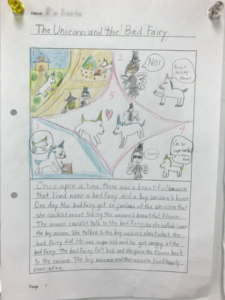
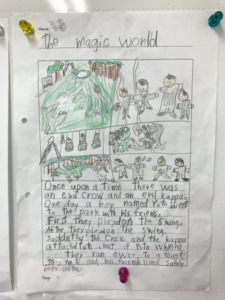
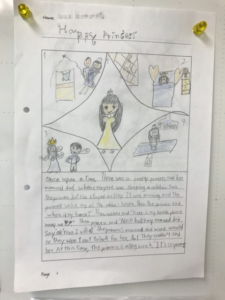

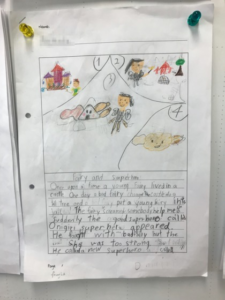
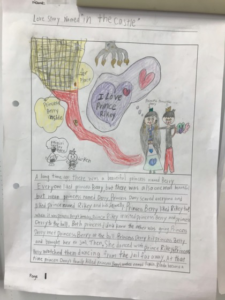
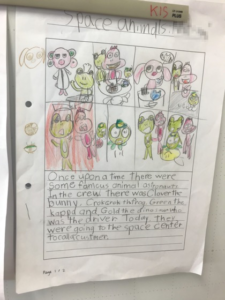
絵日記 - 2年生
- /2年生
Every weekend, Grade 2 students are tasked to write a journal about something that happened recently. This activity is designed to give students important writing practice to see if there are any grammar issues that need to be addressed. They are also given an opportunity to try out what they’ve learned in class. Then, the following Wednesday, after the teachers has corrected the journals, students present their journal to the class. Their classmates then ask the presenter some questions.
This blog post highlights some of the great journals that students have written recently. Students have made good progress writing longer better journals using grammatically more complex English.
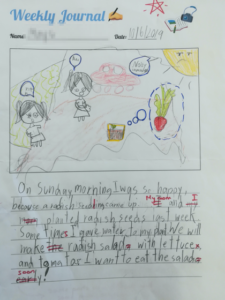

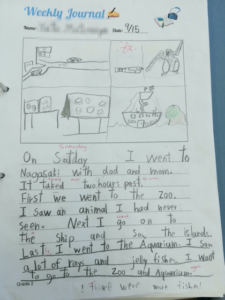
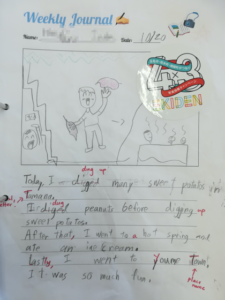
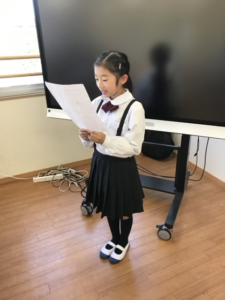
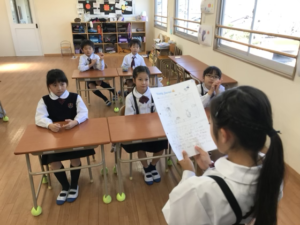
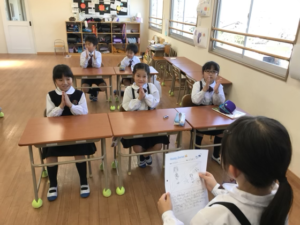
概日リズム - 2年生 TDL
- /2年生
In our current TDL theme, we have been studying about Earth’s cycles circadian rhythms.
One thing that we have been investigating is the idea that our body is better at certain things at different times of the day. So we put it to the test to see for ourselves.
We tested our reactions, strength and coordination once in the morning, and again in the afternoon to see if there were any differences.
Our activities were:
- Catching a ball with alternating hands
- Dropping a ruler and catching it as quick as possible
- Holding on to a bar in the park for as long as possible (not shown in the photos)
The students really enjoyed seeing the limits of their bodies in these three categories. So much so that they want to practice and improve each of these traits!
According to our research, our bodies should perform better later in the day; our results generally confirmed this to be true: we found the students did actually perform better in the afternoon.
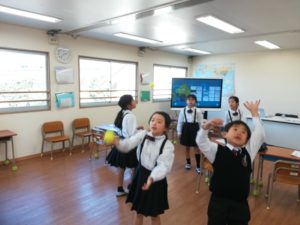
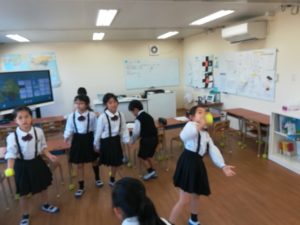
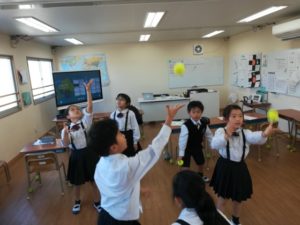
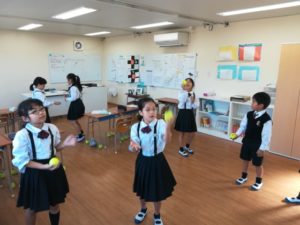
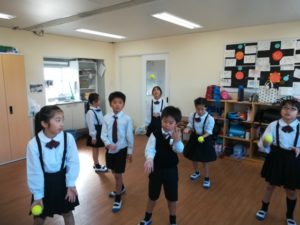
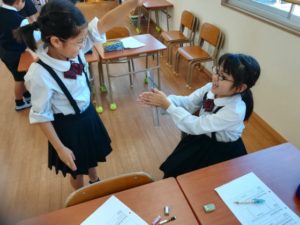
sdr
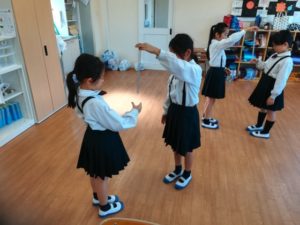
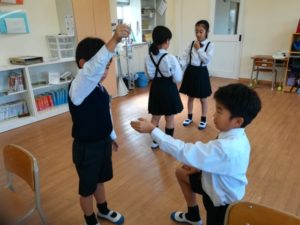
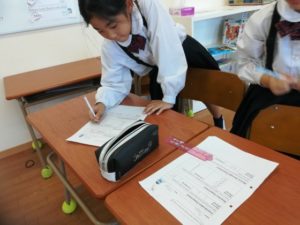
水の科学館遠足 - 2年生
- /2年生
Today Grade 2 went to the Water System Memorial Hall.
We received a lecture about where Kumamoto’s water comes from, how much we use in our daily lives, and ways to save water.
Grade 2 students were able to try three different types of water and try and guess which one was from Kumamoto.
Next, our guides took us through the complex to see what kind of water pumps Kumamoto uses.
Finally, we went to the memorial hall to see what the old pumps and pipes looked like, as well as to learn about what kind of work went into fixing the water system after the Kumamoto Earthquake.
After we thanked our guides, we met up with the Grade 1 class at the Water Science Museum. We had a picnic in the park and played on the swings there for a while until it was finally time to leave.
The students were very well behaved riding public transport despite being in transit over an hour.
All Grade 2 students really enjoyed the experience and have taken away a wealth of knowledge about Kumamoto’s water system.
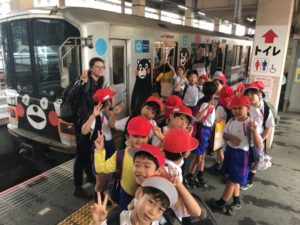
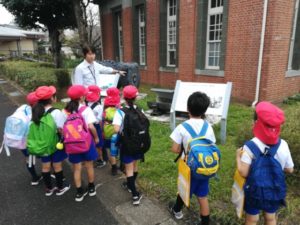

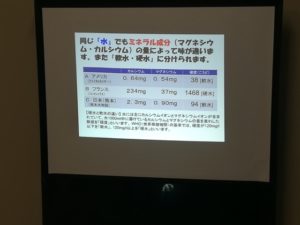
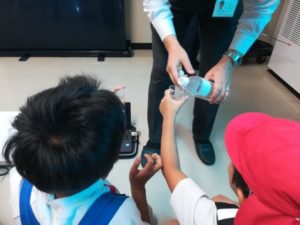
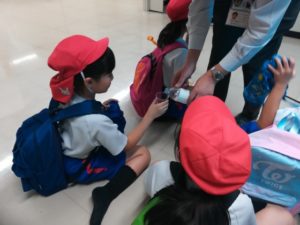
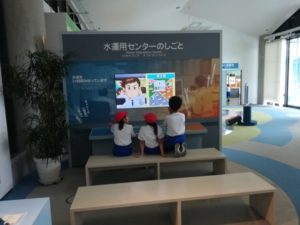
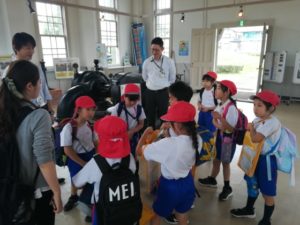
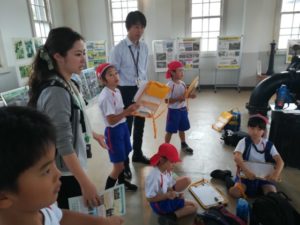
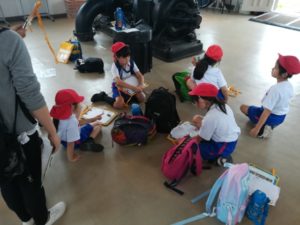
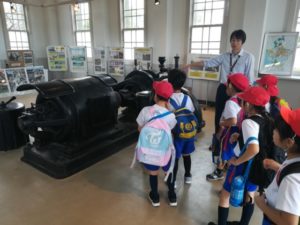
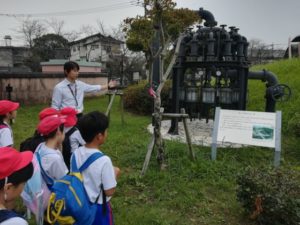
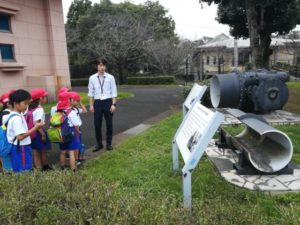

貯金箱 1年生 TDL
- /1年生
Our current TDL unit is the environment, pollution, and recycling. As part of our studies, we worked on a project that showed the students how to reuse, reduce, and recycle garbage in order to help keep our environment clean.
Instead of throwing out our school lunch milk containers, we washed them out carefully and made them into very cute, environmentally-friendly piggy banks! All grade 1 students had a lot of fun decorating their own piggy bank and thinking about what to do with all the coins they’re going to save!
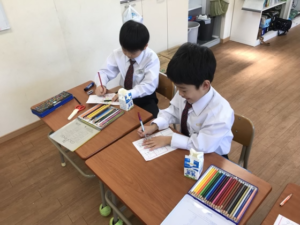
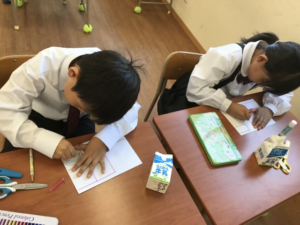
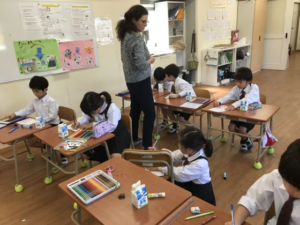
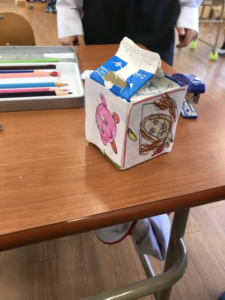
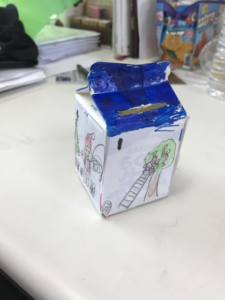
水の科学館遠足 - 1年生
- /1年生
Today we went on our second field trip, this time to the Water Science Museum. We rode the bus and the train to get to the museum, and once there, we broke into separate grade 1 and grade 2 groups. Grade 1 students learned about where the tap water in Kumamoto comes from. These activities tied in nicely to our TDL curriculum on pollution and natural resources, and the children could see first-hand what actually happens to dirty water and what the consequences of irresponsible water use are in our daily lives.
We were also able to enjoy a picnic outside (it didn’t rain, luckily!) and some delicious water that was gifted to us by the museum. All in all, a great day full of fun, learning, and new experiences!

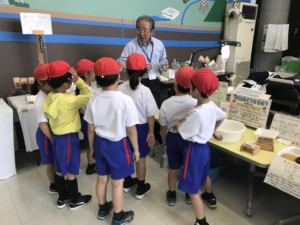
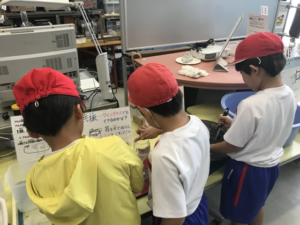




算数 - Math extension in the park - Grade 1
- /1年生
Since we are studying weight and the concept of “lighter”, “heavier”, “as heavy as…”, we spent some time in the park extending grade 1 math lessons to allow students to further apply what they are learning in the real world. After practicing in the classroom with a scale and various objects and units to measure weight, we decided to do a hands-on lesson and use the seesaw in the park in front of our school to review the concepts we learned all together!
The students took turns sitting on the seesaw to find out who is lighter or heavier, and we recorded the results. It was useful (not to mention very fun!) for the children to see how math is useful in real life, and how we can transfer what we learn in the classroom to actual first-hand experiences.

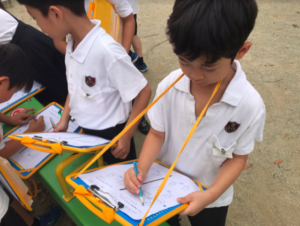
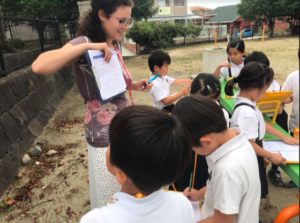
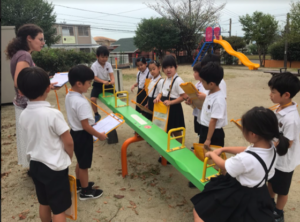
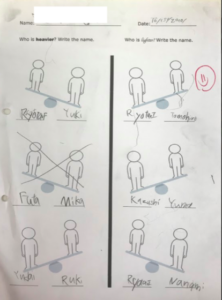
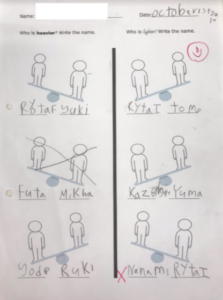
新校舎の増設工事中!
新校舎の増設工事がスタートしました!
2020年3月完成予定
現在の校舎のすぐ隣に敷地と校舎を広げることが決まり、さっそく新校舎の増設工事が始
まりました。新校舎は屋上付き木造2階建てになっており、既存校舎と新校舎は自由に行
き来できる渡り廊下と中庭でつながるようなデザインになっております。既存校舎と新校
舎の2つの建物面積を合わせると約250坪(屋上と中庭を含む)になります。新校舎の増
設に伴い既存校舎も一部改築される予定です。
完成した校舎には、全6学年の教室、音楽室、多目的ホール(体育の授業や行事に使用
)、サンシェード付きの屋上が設置されます。また、増設工事と同時期に、児童が安心し
て学校生活を送れるように防犯対策の強化のための工事も行います。完成後には、防犯カメラ
やオートロック、緊急時の校内放送などの設備が設置されます。
新校舎を増設することにより、教育内容と児童の学校生活が更に充実することを心より願
っています。
来年2020年の春に完成予定です。とても楽しみですね!
完成後の校舎の大まかなイメージ
